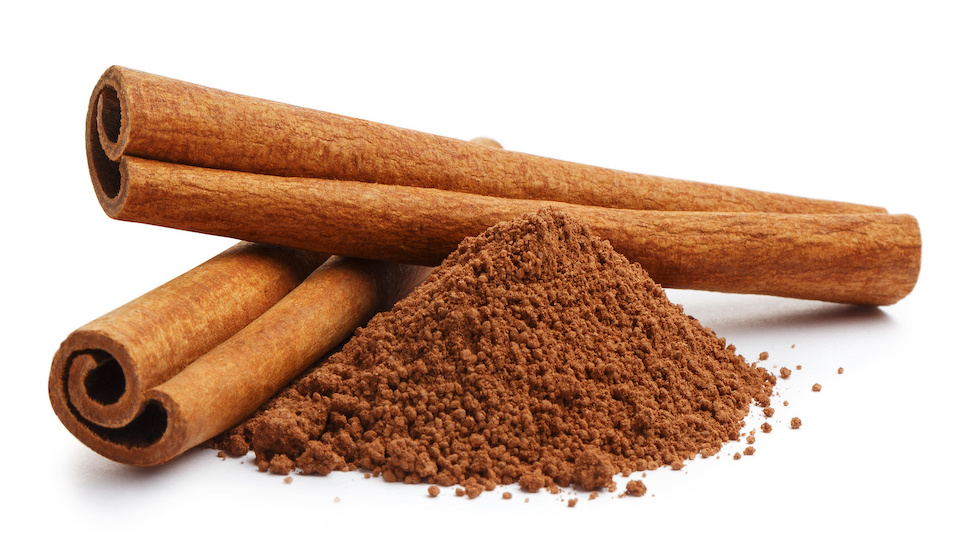Cinnamon has a long history and is one of the oldest spices known to humanity. It received honorable mentions in the Bible and was used in ancient Egypt to flavor beverages, as medicine, and as an embalming agent. Some ancient Chinese botanical medicinal writings date its use as far back as 2700 BC.
This sweet spice is the cinnamon tree’s inner bark (of which there are numerous varieties). When it is dried, the result is a tubular form commonly known as a quill or cinnamon stick. You can also find powdered or ground cinnamon.
There is good reason to consume more cinnamon. Its healing properties are well documented in science, and anecdotal evidence of its effectiveness is easy to find.
Healing properties of cinnamon
Let’s take a closer look at why you should consume more of this popular ancient spice.
Cinnamon contains potent antioxidants
Cinnamon is loaded with potent antioxidants, including polyphenols that protect your body from oxidative damage caused by free radicals. When compared with the antioxidant activity of 26 spices, cinnamon outranked even superfoods like oregano and garlic.
Cinnamon has anti-inflammatory properties
Cinnamon has powerful anti-inflammatory properties that help your body fight infections and repair tissue damage. Studies show that cinnamon contains antioxidants and anti-inflammatory compounds that can help reduce the risk of diseases brought about by inflammation.
Cinnamon may reduce the risk of heart disease
Cinnamon has been linked to a reduction in the risk of heart disease. People with type 2 diabetes who were given one teaspoon of cinnamon per day had beneficial effects on blood markers. Research shows that cinnamon can also reduce blood pressure and lower total cholesterol and LD (bad) cholesterol.
Cinnamon has antibacterial properties
Cinnamon contains cinnamaldehyde, which may help fight bacterial and fungal infections. Cinnamon oil has shown the ability to help respiratory infections caused by fungi. Also, it can also inhibit the growth of bacteria such as listeria and salmonella. Antimicrobial properties in cinnamon also help reduce bad breath and lower the risk of tooth decay.
Cinnamon can balance blood sugar
Cinnamon is the most well-known spice to balance blood sugar. Cinnamon contains compounds that promote insulin function and allow cells to use glucose more effectively. It also slows the rate of gastric emptying, effectively lowering the glycemic load of the food that has been consumed. Human studies show that cinnamon can reduce fasting blood sugar levels by 10-29%. The best dose is .5-2 teaspoons per day.
Cinnamon helps improve insulin sensitivity
Insulin is a key hormone that regulates energy use and metabolism and transports blood sugar from the bloodstream and cells. Insulin resistance occurs when cells in the muscles, fat, and liver don’t respond as they should to insulin and have problems using the glucose in the blood for energy. Cinnamon has been shown to help insulin do its job and reduce insulin resistance drastically.
Cinnamon contains brain-protecting compounds
Alzheimer’s and Parkinson’s disease are the two most common neurodegenerative diseases. These conditions are characterized by a progressive loss of function or structure of cells in the brain. Cinnamon contains compounds that slow the buildup of the protein named tau in the brain. This protein is one of the precursors to Alzheimer’s disease.
How to eat more cinnamon
There are over one hundred cinnamon varieties, with Ceylon cinnamon and Chinese cinnamon being the most commonly consumed. Ceylon cinnamon is known as “true cinnamon,” and the Chinese type is known as “cassia.” It is best to use true cinnamon when you can.
There is no doubt that adding more cinnamon to your diet is a good thing. Although there is no recommended dose, some suggest between ½ to 1 teaspoon per day, while others increase this to 2 teaspoons. Keep in mind that people who are allergic should not consume cinnamon, as large doses may cause an extreme reaction.
Cinnamon is not one of those things that you just eat straight out of the container– you have to work it into your daily diet creatively. The good news is that this potent spice is extremely versatile and pleasant-tasting. Here are five ways that you can get more cinnamon!
Mix it with your green tea: Add one to two teaspoons of organic ground cinnamon to a hot cup of green tea. Stir slowly to help the cinnamon dissolve.
Mix it with your coffee before brewing: Add an organic cinnamon stick or a teaspoon of organic ground cinnamon to your ground coffee before brewing. Doing this will make your coffee taste great and make your whole house smell wonderful.
Add it to soups and stews: Cinnamon adds a wonderful flavor and aroma to a wide range of soups and stews. You won’t believe how good these can taste with just a bit of cinnamon in the mix. Add a dash or two of organic cinnamon to chili, lentils, beef stew, and black bean soups for a great warming goodness.
Add it to your breakfast: Ground cinnamon tastes excellent when sprinkled on all sorts of breakfast foods, including free-range eggs, oatmeal, cottage cheese, and yogurt. Get into the habit of having a container of organic cinnamon handy so that you can sprinkle away.
Add it to your green smoothie: To further enhance the benefits of a green smoothie, add a teaspoon of organic cinnamon along with all of your other goodies. This will add a pleasant taste and aroma to your drink.
Getting out of the mindset that cinnamon can only be added to baked goods is a great first step to healthy living. There are many other ways you can enjoy this spice daily, such as adding it to rice, barley, casseroles, and salads.
Happy Growing,
Susan, CBHC and Master Gardener




